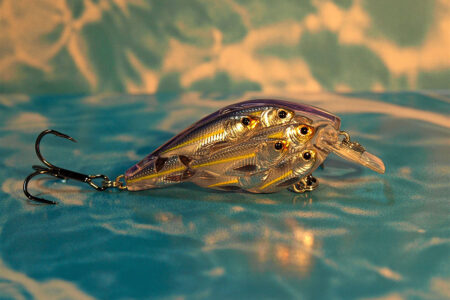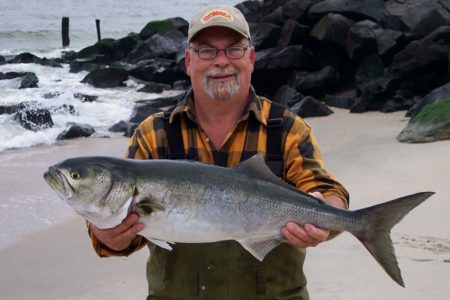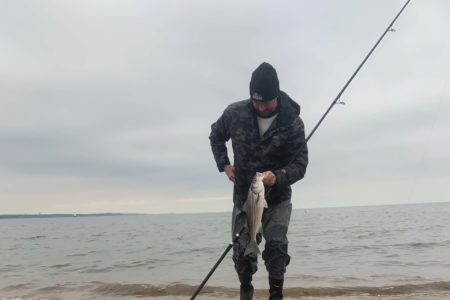
It’s not just a fly-fisher’s game anymore!
Has this ever happened to you? You’re fishing in some backwater estuary in the spring, you’re surrounded by more stripers than you’ve ever seen in one place, they’re smashing the surface all around you, you’ve been through every plug and plastic you own and you haven’t had a single hit… this frustrating phenomenon is known as a cinder worm hatch.
Turn your light on and you’ll see thousands of tiny reddish worms writhing in the tide, spin-fishermen have been known to walk away from these events without making a single cast, while fly-fishers reap the rewards. In reality it is not a hatch at all, but a spawn. Cinder worms are 1- to 3- inch worms which spend most of their lives burrowed in the mucky bottom of back bays. When spring rolls around and the water temperature, moon phase, and tides align just right, they come out of the mud and swim to the surface where they will spawn. This sets up a perfect feeding opportunity for striped bass.
Cinder worm hatches have been known to occur along the East Coast from the Chesapeake Bay all the way up into Maine. A good way to try and find a cinder worm hatch is to look for back bays with marshy areas surrounding it and then fish them around the full and new moons, bigger tides and increased current seem to set off these nighttime spawning events. Cinder worms also tend to be attracted to dock lights or any other artificial light source, that’s another way you can increase your chances of getting in on the ‘hatch’.
The good news is, since these spawning events are so widespread, you don’t have to travel far to fish them, but you will have to get out of the house and put in the time to line yourself up on the right night.
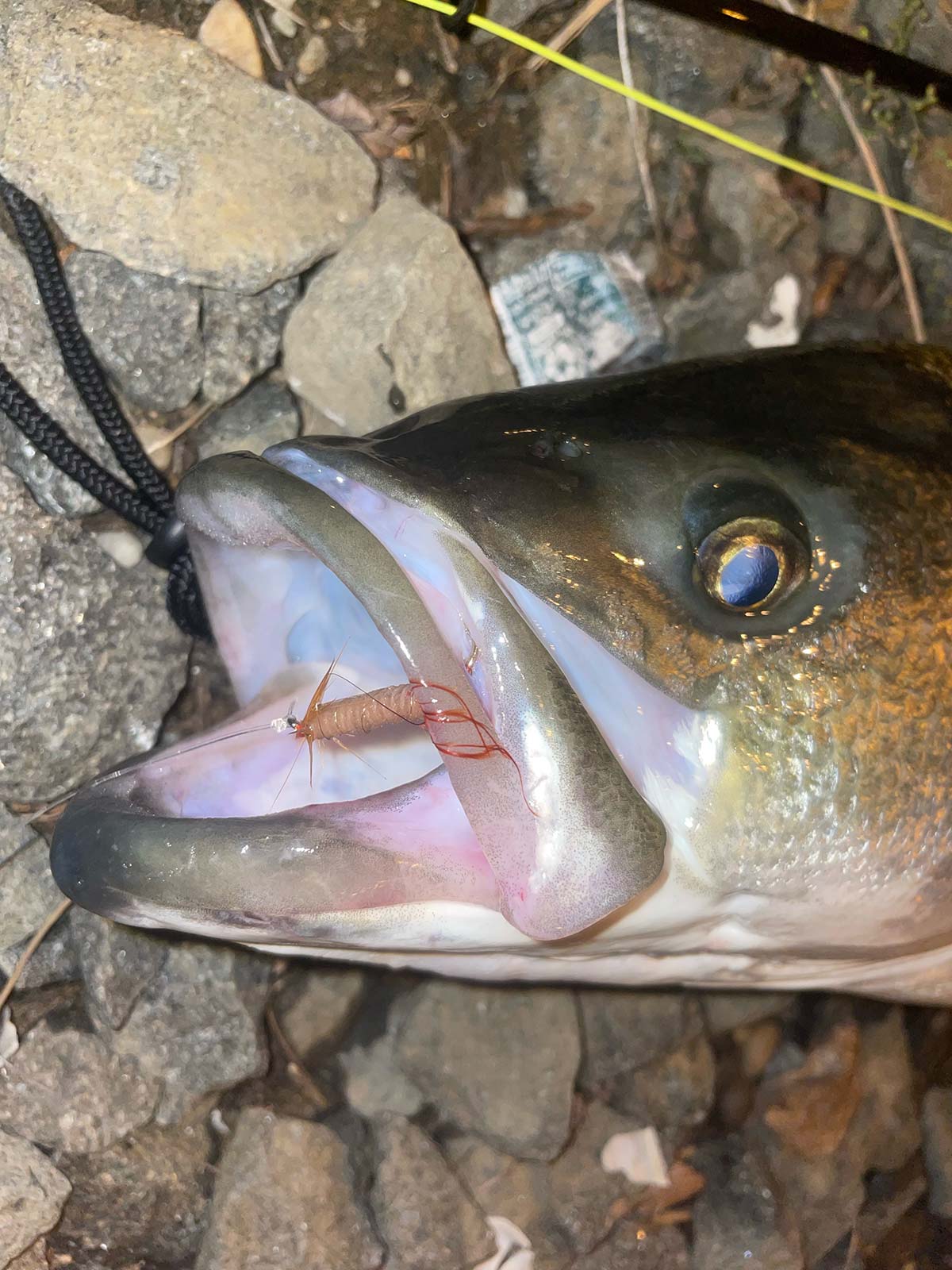
Cinders & Stripers
Striped bass are opportunistic feeders and will always try to exert the least amount of energy to fill their stomachs. This goes for whatever type of bait is around whether it happens to be peanut bunker, sand eels or…cinder worms. Whenever there is a big abundance of easy prey, stripers become far less likely to turn their attention away from the easy feed to chase down anything else. This is when you might hear anglers saying that the bass are really ‘keyed in’ on something. This is when it’s wise to try to match the hatch, AKA give the closest presentation to what they are feeding on. As an angler its best to focus on what you can control, the rest depends on whether the fish will choose your lure over their natural prey.
Traditionally, a cinder worm hatch is thought of as a “fly fishing only” event. This is because cinder worms are so small, they’re just much easier to replicate them with a fly. And just about any lure a spin fisherman might think would be small enough to match the hatch would be difficult, if not impossible, to cast. Getting on a cinder worm hatch as a fly fisherman can be one of the most enjoyable fishing experiences. In order to be successful you need the right fly and the right retrieve to fool these finicky fish. There are specific cinder worm fly patterns but any weightless fly about 1 to 2 inches in a brownish red color will do the trick.
The difficult part is the retrieve. This is going to depend on the amount of current you are dealing with. If there is very little current you are going to have to replicate the movements of the worms on the surface. A moderately fast retrieve with some pauses and erratic twitches will usually entice a bite. It is also a good idea to scan the area looking for rolling bass to target. If the worms are being swept through in current, then you can just cast up current and allow your fly to drift down. This requires far less finesse and is sometimes equally as effective. It’s all about figuring out what works.

Spin Cycle
A few years ago in the spring, I was fishing a back bay spot that had been producing fish for a couple of nights in a row. On the third night I went back expecting the same results, but when I arrived, there were stripers surfacing all around me. I tried every lure in my bag, and then every lure in my car. Not a single fish to show for my efforts. That night I did something I rarely do, I walked away from feeding fish. I knew this must be a cinder worm hatch.
I went home and did some research, which lead me directly into a predicament. I am a poor fly fisherman, and I only have a 4-weight fly rod in my arsenal. For those of you who don’t know, a 4-weight is generally used for trout and mid-sized freshwater fish. Some of the fish feeding in this spot would easily overpower that setup. So, I had to come up with a way to get these fish to bite something I could throw on spinning tackle. I experimented with many out of the ordinary offerings. The combination that did it was a Gulp sandworm trimmed to size on a 1/8-ounce VMC jighead. This provided the proper size, color, and just enough weight so I could cast on a heavy enough spinning rod and the hook was stout enough to handle a decent-sized striper. I am certain that there is a different combination of soft plastic and jighead that will do the job just as well or better, but this is what cracked the code for me.
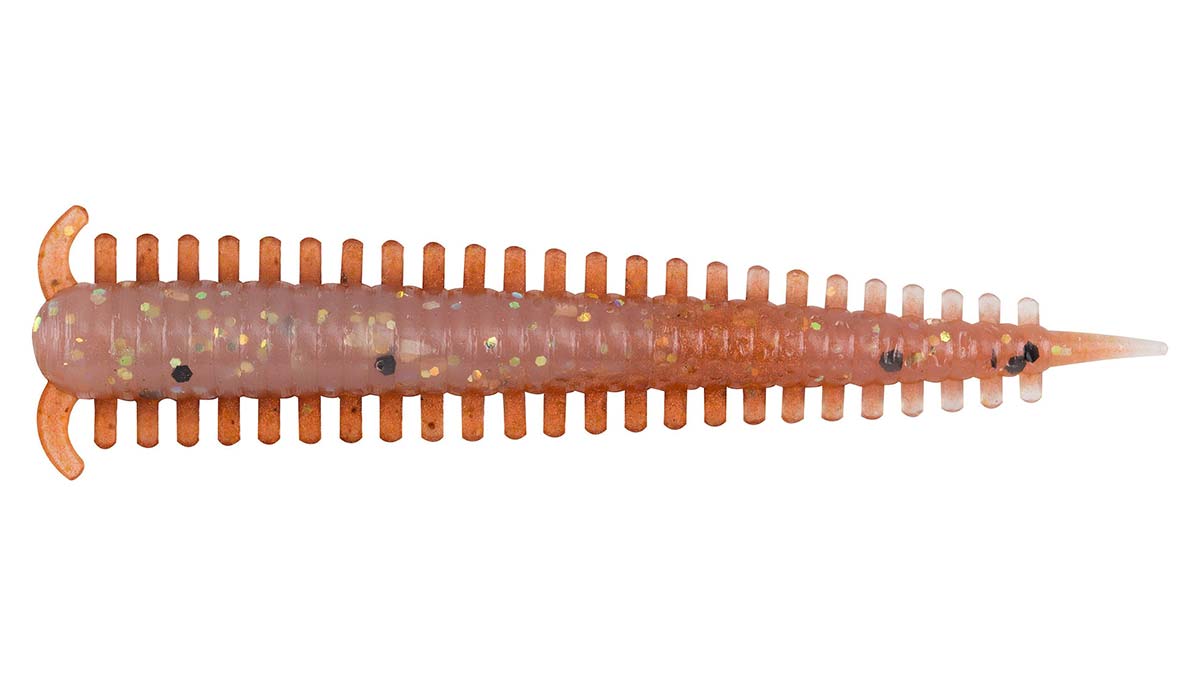
The retrieve turned out to be just as important as the lure. I had to keep my tip high to ensure that the jig stayed on the surface. My retrieve was fairly quick, let’s call it, ‘moderately fast’ and I was imparting series of light twitches throughout. The only difference between this and the fly retrieve is that I did not add any pauses, because the weight of the jig would have sunk it quickly out of the strike zone. With this tactic I was able to catch many bass up to 10 pounds on a light rod. I look forward to replicating that bite this spring. The process of figuring this out taught me it pays to get creative in fishing and that every ‘problem’ has a solution.
Cinder worm hatches can be a difficult situation to fish. Many anglers will pack up their gear out of frustration. Although I try to keep my tackle selection as simple and practical as possible, sometimes it really pays off to think outside the box.

